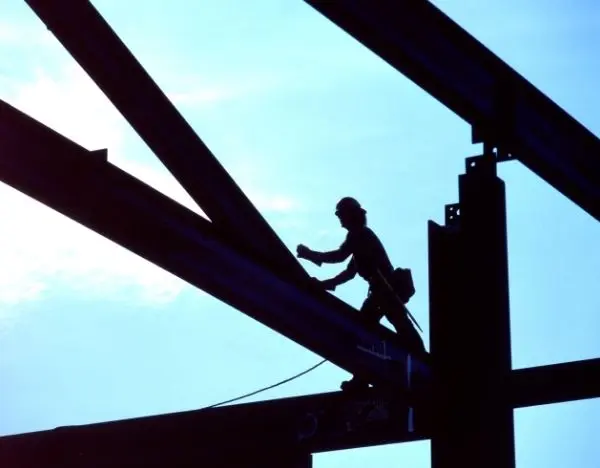Such workers literally do the work that keeps our buildings upright.
In New York City, the height and density of building intensifies the hazards facing construction workers during building, renovation, repair or demolition. Ironworkers and concrete workers are particularly vulnerable to serious injury and death because they create the very bones of buildings: steel girders, framing, foundations and more.
Based on U.S. Bureau of Labor Statistics (BLS) and Occupational Safety and Health Administration (OSHA) data, construction trade journal EHS Today concluded that of five different construction-work types, the category into which ironworking and concrete work falls, namely the specialty trade contractors who work on foundations, structures and concrete, has the highest percentage of deaths at 48 percent.
Iron workers, also called erectors
BLS describes the work of ironworkers as installing “structural and reinforcing iron and steel to form and support buildings, bridges, and roads … physically demanding and dangerous work, often working at great heights …”
Ironworker duties include welding and bolting; rigging (moving large, heavy objects); signaling other workers like crane operators in the positioning of large pieces of iron and steel; reinforcing buildings using rebar, cable and other products; installing bracing and shoring materials; and aligning, cutting, bending and connecting pieces of structural iron and steel.
Ironworkers are at risk of falling; being hurt during contact with equipment or heavy metal objects; getting cuts and lacerations; and facing the possibility of structural collapse when either working at great heights or underneath tons of metal and other building materials.
Concrete workers
Concrete workers include masons who use concrete, bricks and similar materials to build and repair walls, floors, chimneys, foundations, driveways, sidewalks and other similar structures. Workers may need to break materials into pieces; mix, pour, level, apply and finish concrete, caulking, grout, mortar and other similar materials; finish surfaces using hand tools; use heavy equipment and power tools; and more.
Another group of concrete workers are called concrete or cement manufacturers who mix, transport and pour wet concrete. These workers are at risk of being burned from contact with wet concrete, which is very caustic, and hot equipment.
Concrete work involves heavy lifting, repetitive motion and other physically demanding duties that can cause muscle strain and musculoskeletal injuries. They are also at risk of lacerations, slipping or tripping, falling and being hit by falling objects. Cement dust can cause respiratory distress and eye and skin irritation, and airborne silica causes serious lung damage. Concrete workers may be exposed to excessive noise levels and the dangers of working in confined spaces.
Safety equipment, training, safe conditions and best practices
Contractors, as well as owners of job sites, who employ ironworkers and concrete workers must follow federal, state and local safety regulations as well as industry best practices on construction sites. This includes providing thorough training and safety equipment like harnesses, respiratory protection, helmets, kneepads, eye protection, protective clothing and boots. Heavy, dangerous machinery must be well maintained and include proper safety guards. Proper building procedures must be followed to prevent structural instability. Employers must order work to cease in icy, windy or wet weather.
Anyone injured in the construction industry should speak with legal counsel to understand potential legal remedies like workers’ compensation and Scaffold Law and third-party lawsuits. Survivors of fatally injured construction workers should speak to an attorney about workers’ compensation and whether a wrongful death suit is appropriate.
The Manhattan attorneys at Arye, Lustig & Sassower, P.C., represent construction workers who live or work in the greater New York City area, Long Island or Upstate New York who are injured in the course of employment as well as surviving loved ones of construction workers who have suffered fatal work injuries.



